Lowther Castle: The spectacular and historic gardens that rise from one of Britain's most evocative ruins
The gardens at Lowther Castle, Penrith, Cumbria, rise artfully from the ruins of their spectacular setting — yet the effort it has taken them to blend in so perfectly has been immense. Non Morris reports on Jim Lowther and Dan Pearson’s continuing work to restore these historic gardens; photographs by Val Corbett.
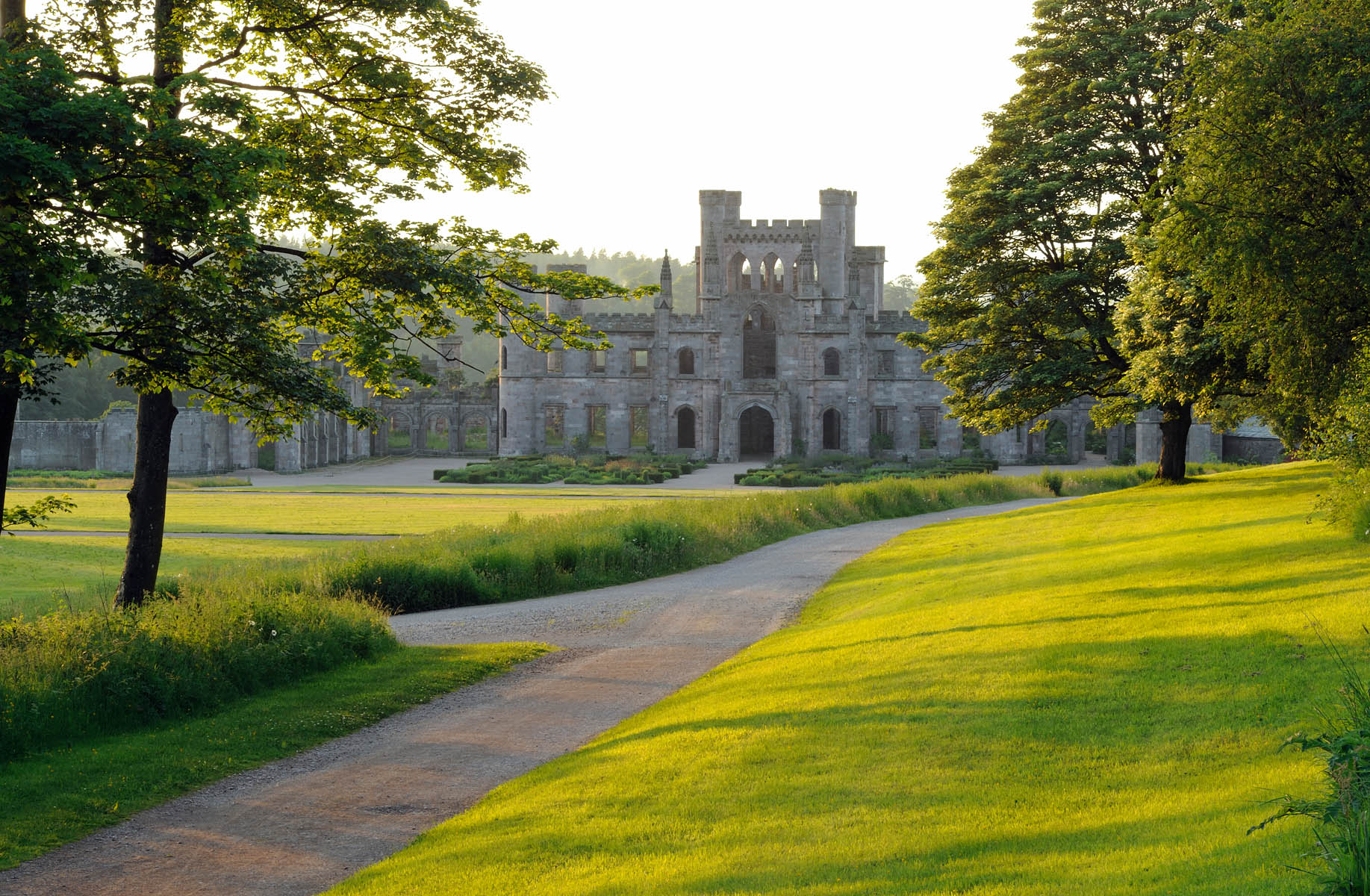

Stories of mind-boggling extravagance and moments of great peril abound at Lowther Castle. The spreading, many-turreted Regency building sits calmly today in a gloriously elevated position in the Lake District National Park and feels protected by the 3,000 acres of medieval deer park and farmland that surround it. However, it’s the 130 acres of exuberant gardens that an ever-increasing number of visitors are coming to enjoy.
Representing an extraordinary turnaround in the history of the castle, they are as inspiring to visit for the courageous stories of recovery and reinvention as they are for the surprises and pleasures of their ambitious and imaginative planting.
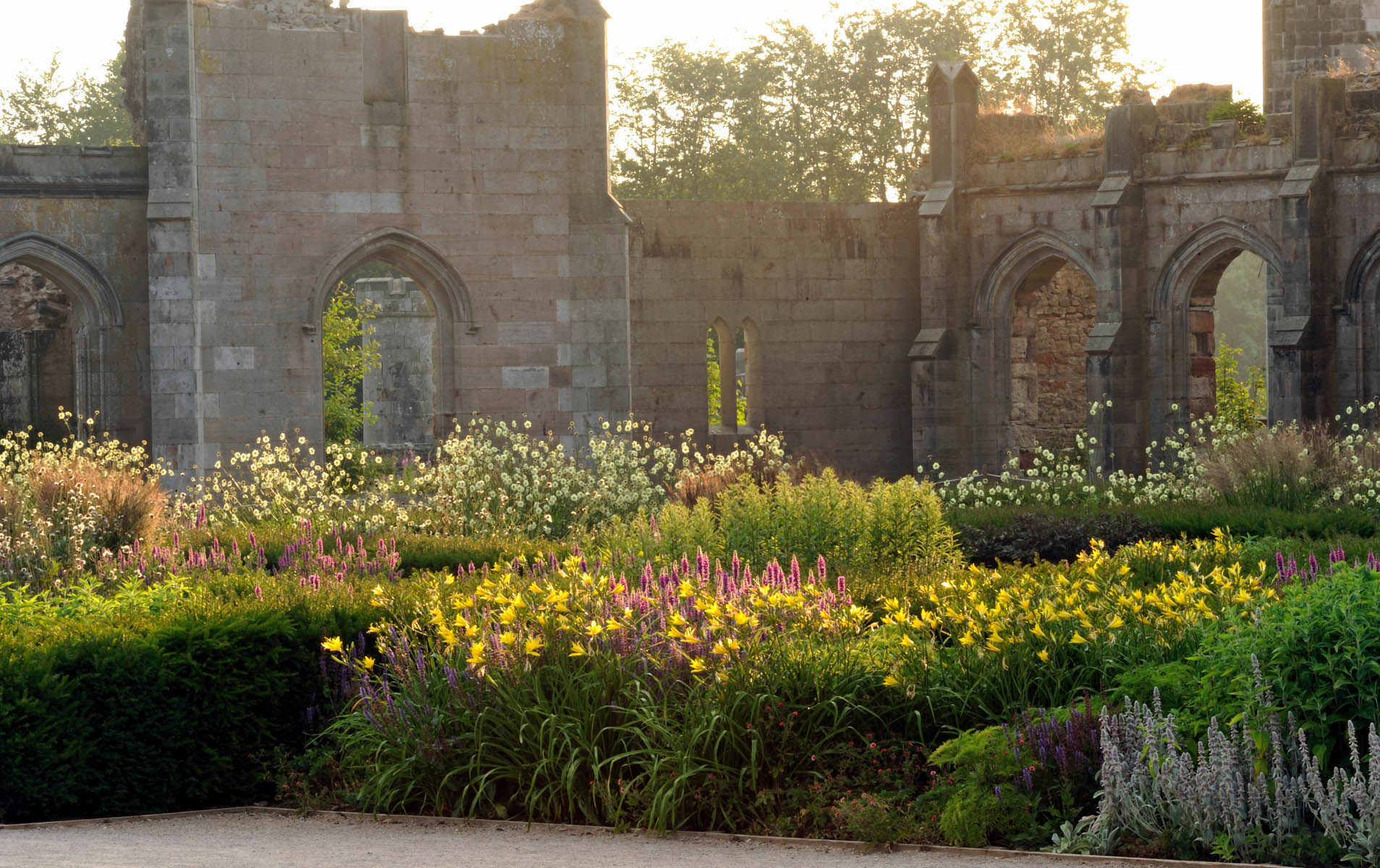
Not that there’s a whisper of neglect at your first stop, the sleek entrance courtyard. This is a smooth-paved space of pink sandstone (to match the castle façade) and stretches of fine gravel that result in a spare, almost Parisian feel. The courtyard is animated by a series of 32 monumental clipped hornbeams — both square columns and stilted ‘boxtops’ — gracefully choreographed to suggest a battle formation and there are generous, simple oak benches weighty enough to feel absolutely right in this monumental context.
The designer who transformed this ‘whistling, freezing cold place’ into a relaxing start to your visit is the deeply thoughtful Dan Pearson. ‘Everything about the place was uncomfortable,’ he recalls of his first visit at the invitation of current owner Jim Lowther, who had set up a trust to rescue the castle and open the gardens to the public.
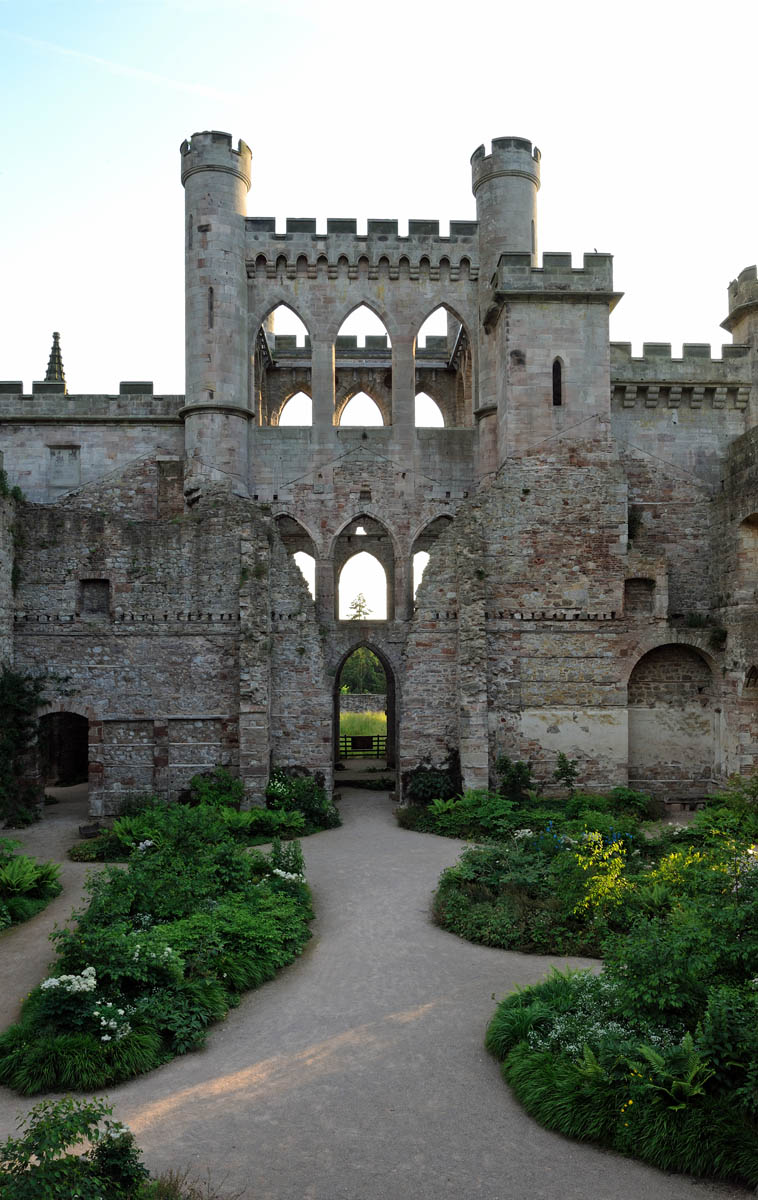
Lowther’s colourful history includes a fire in 1718 that destroyed the earlier Queen Anne house and the building of the elaborate neo-Gothic castle nearly 100 years later. Things stepped up a gear when the sensationally high-living Hugh Lowther, 5th Earl of Lonsdale, arrived in 1882. Famous for founding the Automobile Association, his mutually flattering friendship with Kaiser Wilhelm II and a level of luxury and self-indulgence that included separate first-class railway carriages for his dogs, the ‘Yellow Earl’ left the coffers at Lowther bare and abandoned his seat for good in 1936.
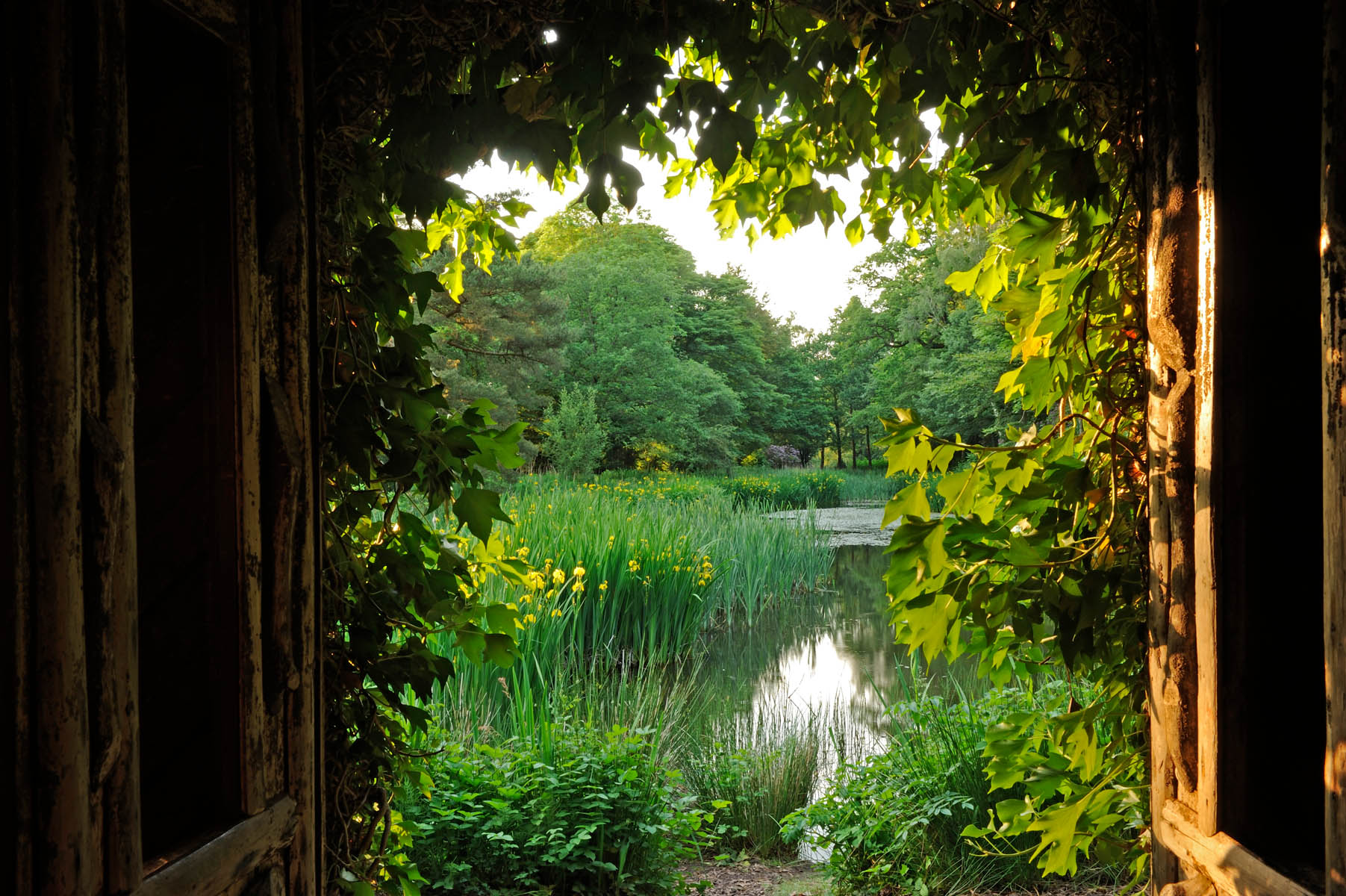
In his younger days, the 5th Earl had commissioned the celebrated Edwardian designer Thomas Mawson to add a series of themed pleasure gardens to the Baroque framework of the grounds, but the abandoned house was requisitioned by the army in 1942 and the neglected garden disappeared under tons of concrete.
When Mr Lowther’s father took over the estate in the 1950s, he faced £25 million in death duties. To keep the castle in the family, he made the decision to take off its roof, then planted Sitka spruce and installed pens of battery chickens right up to the house. That was how things remained until the early 2000s, when Mr Lowther began to look afresh at what might be possible.
Sign up for the Country Life Newsletter
Exquisite houses, the beauty of Nature, and how to get the most from your life, straight to your inbox.
Mr Pearson recalls his first impressions: ‘Underneath, where the army tanks couldn’t go, the gardens went into a mossy stasis, where they got cocooned in shadow and moss and there was this extraordinary atmosphere… One of the amazing things about that garden was the sense of discovery and the feeling that it was on the brink.’
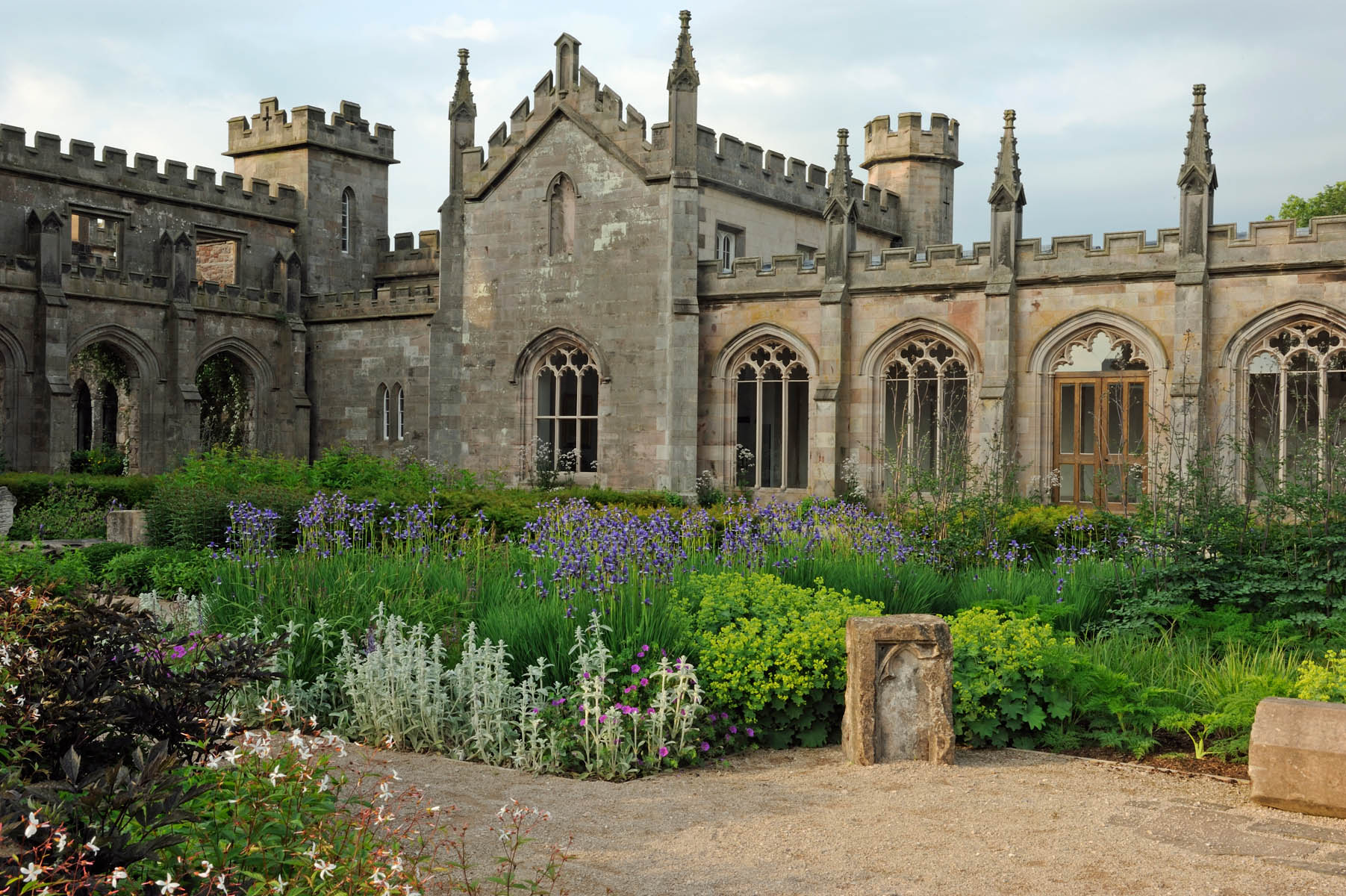
An earlier project by Mr Pearson had been the creation of a romantic garden in the medieval ruins of Torrecchia Vecchia near Rome — itself inspired by the atmospheric gardens created from similar ruins at nearby Ninfa. He advocated a similarly gentle handling of land around the austere ruined castle, one that would acknowledge the powerful landscape and challenging climate that surround it. To that end, he developed a master-plan of 15 different garden spaces that would emerge slowly over a number of years.
As the buildings were being made stable, landscape architect and historian Dominic Cole was asked to research and restore the bones of the garden, revealing the enormous South Lawns that slope up away from the castle. As part of Mr Pearson’s masterplan, there are now wildflower meadows to either side, which light up each spring with bulbs, including a sequence of violet-blue camassia (Camassia leichtlinii followed by Camassia quamash), of which at least 36,000 have been planted in the past two years.
‘The lawn is so huge, you can lose several families on it — they just disappear,’ says Mr Pearson as he describes the evolution of the Tapestry Garden, which fills the space at the base of the castle’s south front. ‘We needed to put something there to hold the scale of the lawns and somehow weigh the buildings down.’
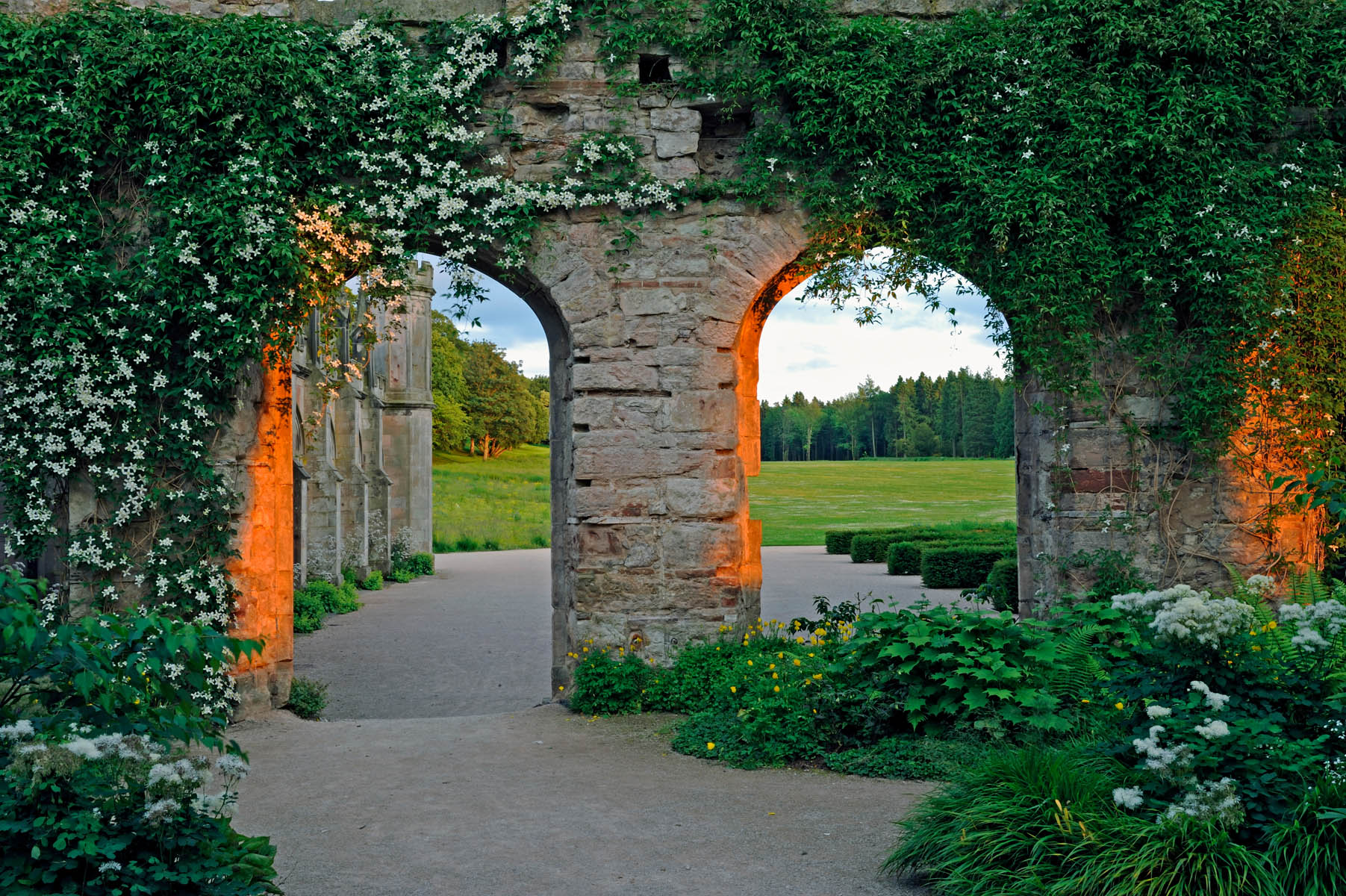
The yew hedges, he adds, ‘refer to the footprint of the old house that used to stand on this spot’ and become a framework filled with dancing swathes of herbaceous planting as the season progresses.
When I visit, impossibly perfect stretches of Actaea simplex James Compton raise their lacy pinkish-white tapers above glossy beetroot foliage. Towering, airy seedheads of Thalictrum Elin catch the light through the glassless Gothic tracery of the ruins, with soft mounds of the tiny white Aster divaricatus forming graceful cushions at its feet.
Next on the list for Mr Pearson was the Garden in the Ruin. The first phase was planted in 2015 and was already an exciting, open-roofed cathedral-like space exquisitely furnished with combinations such as soft-mauve Hydrangea aspera Sargentiana against a wall of the velvety-pink-veined Parthenocissus henryana. ‘I want it to feel colonised,’ says the designer. ‘It looks really sheltered, but it’s not what it seems — there are gales blowing through the space.’

The Ruin garden’s cool, wet climate has enabled Mr Pearson to revisit a passion for the Himalayan rock-garden plants he discovered when he was a student at Edinburgh Botanic Gardens. The clear electric-blue of Meconopsis Lingholm, together with the bright scarlet of the climber Tropaeolum speciosum, add an intriguing, magic-sorcerer element to the atmosphere.
Of the Edwardian Pleasure Gardens, there is still much to do, but the approach will again be subtle. The Japanese Garden (whose collection of bonsais were auctioned off in the headline-grabbing house sale of 1947) will have Japanese plants, but will not try to be a Japanese garden, and the Scented Garden will become a Katsura Grove, which will smell deliciously of caramelised sugar in the autumn.
Mr Pearson pays tribute to Mr Lowther’s visionary approach: ‘He’s a mountaineer, brave and intuitive. If he likes an idea, he just gets behind it straight away.’
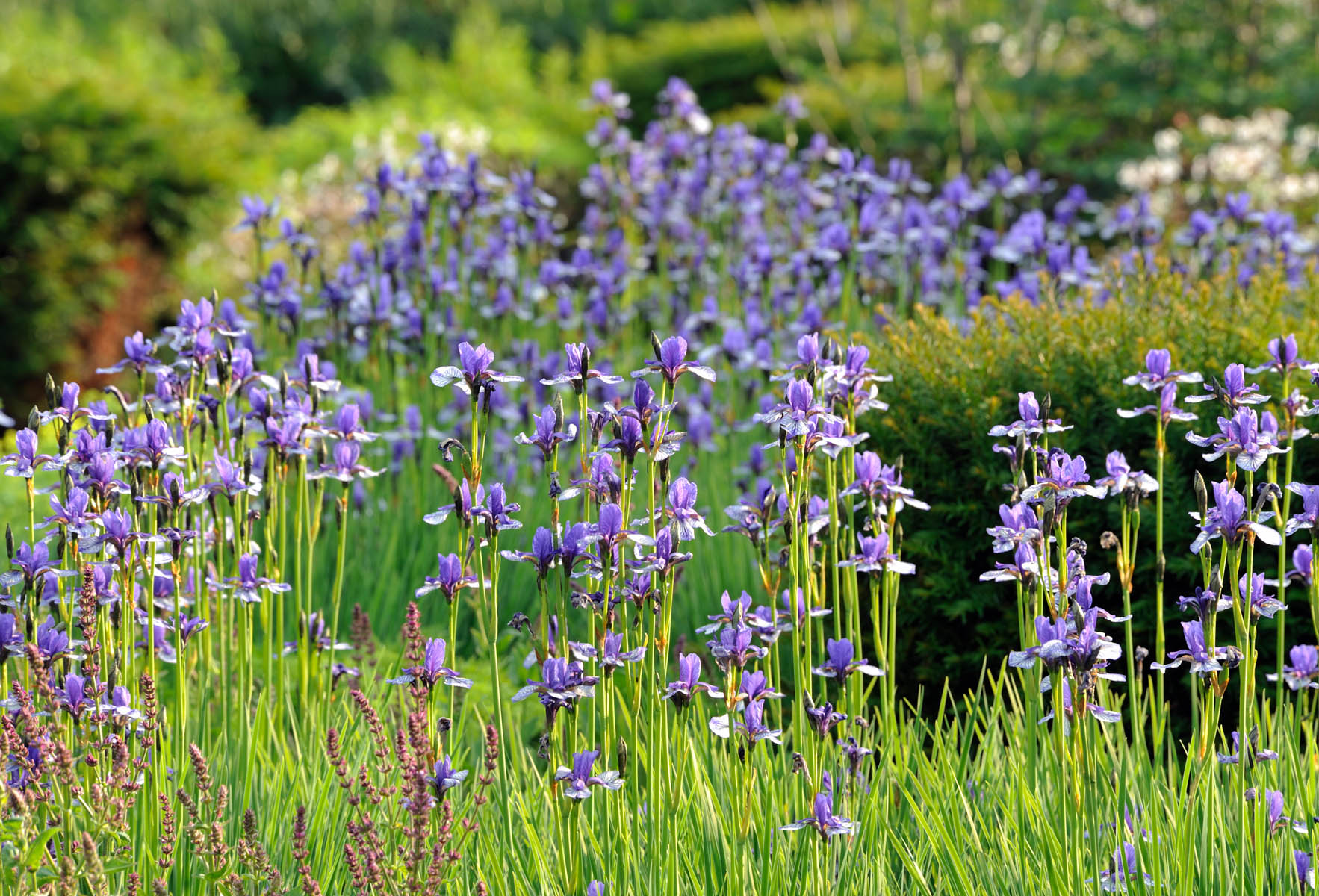
He also emphasises the essential part played by the young head gardener, Martin Ogle, who took over when the garden was at its most challenging phase. Money was impossibly tight, yet he managed, with the help of volunteers, to propagate the plants required from an almost laughably modest starting point.
‘We came up with the idea of an orchard of old Cumbrian varieties,’ Mr Pearson tells me, ‘and Martin actually made it happen. He went out, found the trees — in some cases, there was only a single specimen left — and budded the whole orchard.’ If there is a variety that remains nameless, the idea of a ‘Yellow Earl’ apple has been mooted.
The gardens at Lowther continue to evolve. Mr Pearson’s new Rose Garden — the design for which is based on the cross-section of a rose and is inspired by Edward Burne-Jones’s ‘The Legend of Briar Rose’ series of paintings is under construction. To date, 1,250 eglantine roses, underplanted with brunnera, Galium odoratum and Chaero-phyllum hirsutum Roseum, have been planted to form the boundary of the garden.
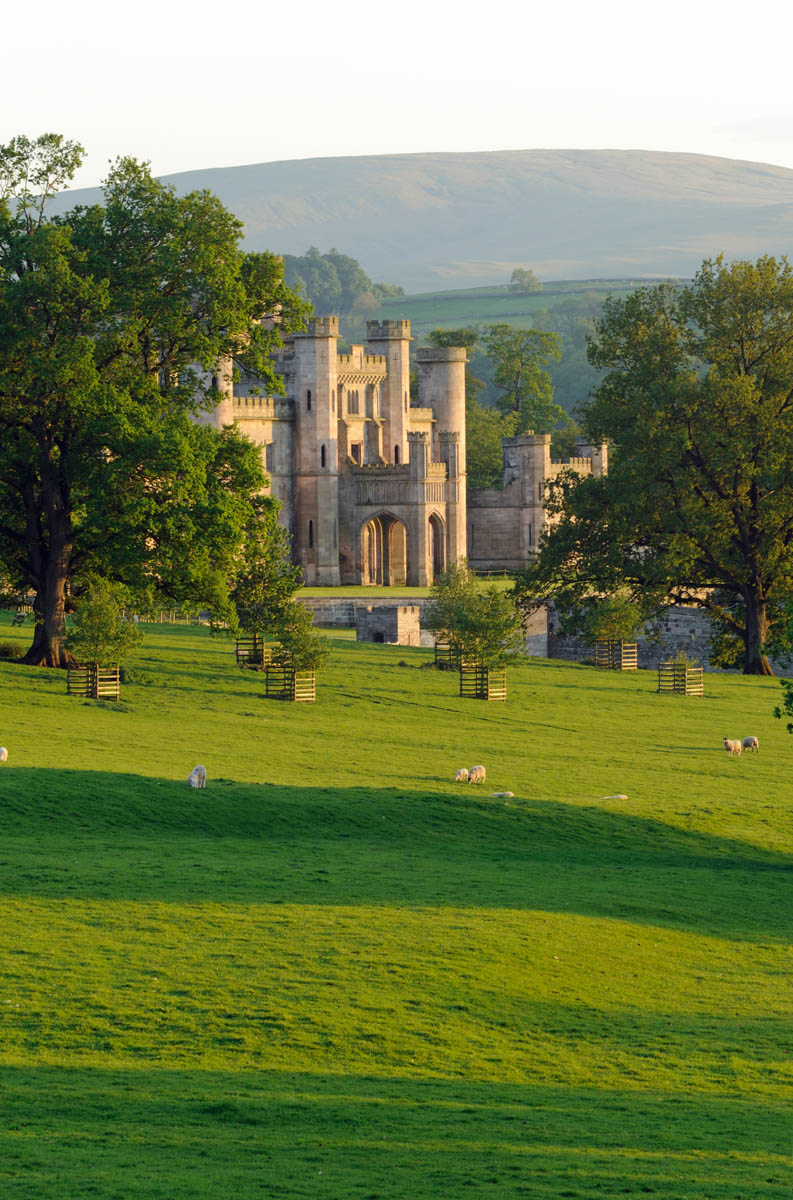
This spring, 6,000 perennials went in to what are the ‘petals’ of the stylised rose. These include the white Geranium macrorrhizum White-Ness, Calamintha sylvatica Menthe and Brunnera macrophylla Betty Bowring, as well as spring-flowering bulbs of Narcissus poeticus and Camassia leichtlinii alba — all of which are run through with species roses, such as the red R. moyesii Geranium and pink R. Willmottiae.
To the west of the garden, an old summer house that once stood near here has been re-created and will be romantically planted around with honeysuckle, roses and bulbs.
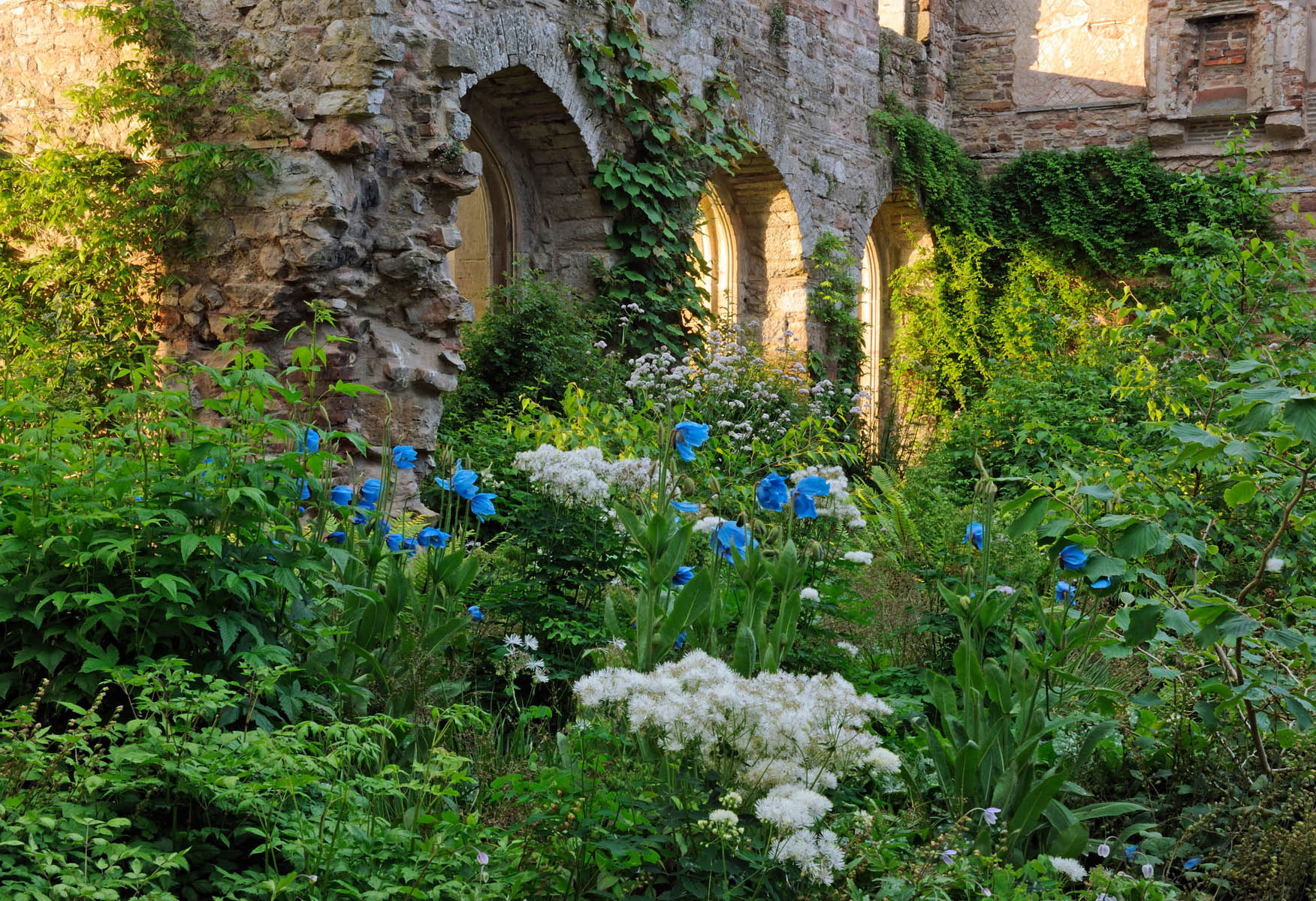
Finally, next winter, another 2,255 David Austin roses (including Kew Gardens, Susan Williams Ellis, Munstead Wood, Skylark, Boscobel and Lady of Shalott) will be dug in, with the warmer colours outside, fading to cooler around the central pond.
To see the results, visitors must wait patiently until its opening in the spring of 2020. It promises to be a real treat.
Lowther Castle, Penrith, Cumbria — www.lowthercastle.org. Open every day except Christmas Day, 10am–5pm, April to September and 10am–4pm October to March.
-
 How an app can make you fall in love with nature, with Melissa Harrison
How an app can make you fall in love with nature, with Melissa HarrisonThe novelist, children's author and nature writer Melissa Harrison joins the podcast to talk about her love of the natural world and her new app, Encounter.
By James Fisher
-
 'There is nothing like it on this side of Arcadia': Hampshire's Grange Festival is making radical changes ahead of the 2025 country-house opera season
'There is nothing like it on this side of Arcadia': Hampshire's Grange Festival is making radical changes ahead of the 2025 country-house opera seasonBy Annunciata Elwes